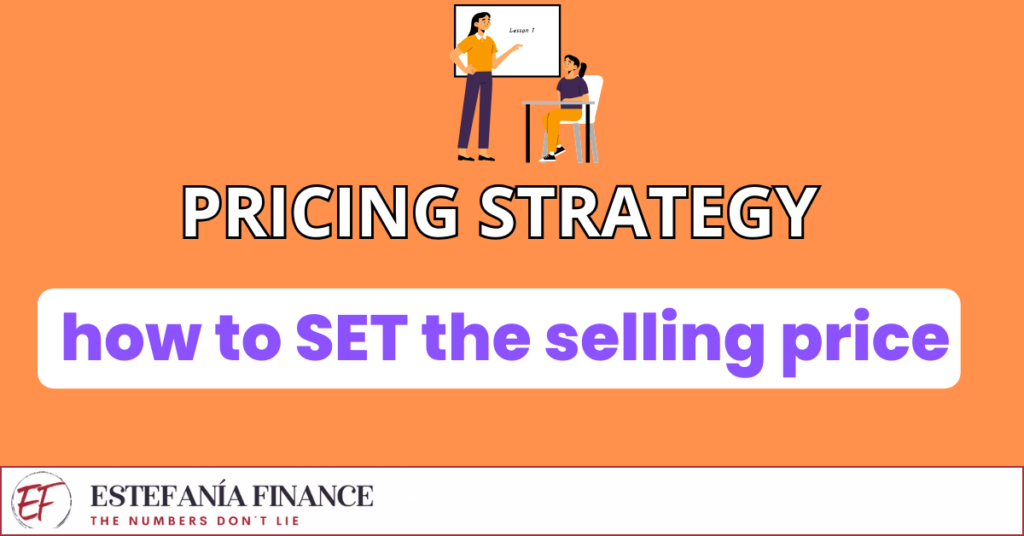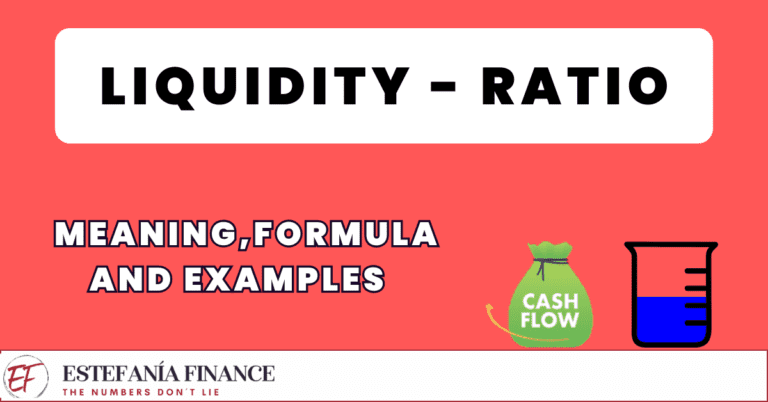One of the most crucial aspects that entrepreneurs and businesses face is correctly determining the selling price of their products. An inadequate price could mean the difference between SUCCESS AND FAILURE.
many businesses close down or fail to operate because of pricing errors by setting prices too high where products are not sold or prices too low that do not cover costs.
In this post, I will guide you step by step so you know how to set a price that not only covers your costs but also provides you with a profit.

THE 4 BASIC COMPONENTS OF PRICE
1. Direct Costs?
These are the costs directly associated with the production of your product. They include RAW MATERIALS, DIRECT LABOR, and other expenses that are essential to create the product.
Direct labour would only include the wages of staff in charge of assembling or manufacturing the product. That is, anyone who is essential to produce or sell each unit of the product.
Material cost: PRICE PER UNIT.
Labour cost: HOUR RATE x TIME WORKED.
Example:
If you are a company that sells products directly to the consumer, some of these direct costs would be: product cost, shipping and transport cost, sales commissions per product, packaging.
And if you manufacture t-shirts, the direct costs would include fabric, thread, labels, and the wages of the workers who assemble them.
In short, they are all the costs necessary to sell or manufacture the product, which increase or decrease according to the number of units sold or manufactured.
✂️ Formula: Direct Costs = Material Cost + Labour Cost
2. Indirect Costs ?
Also known as fixed costs, these do not vary with the volume of production but are necessary for the business operation.
These are costs of rents, utilities, insurance, office supplies, licenses, advertising, administrative salaries.
Indirect or fixed costs are those that, unlike direct costs, do not fluctuate with the level of production. These include rent, utilities, insurance, administrative salaries, among others.
? It is essential that the selling price is able to COVER DIRECT AND INDIRECT COSTS and still generate PROFIT?
3. Gross Margin ?
The gross margin represents the difference between the selling price and the direct costs. Taking the example of a bakery, it would be the difference between what you charge for bread and what it costs to produce it.
Gross Margin= Sales – cost of sales CV
It is highly recommended to analyze it as a percentage of sales as it will provide greater control. It is recommended to analyze it monthly.
If the margin is reduced, it can be due to:
- price reduction because competitors emerge with a lower price
- increase in merchandise prices
- increase in subcontracted work prices
- sale of products with a lower margin
- increase in finished products unsold
- increase in waste
- increase in discounts
we can obtain the profit we get by multiplying the price by the volume and subtracting the total cost.
PROFIT: PRICE X VOLUME – TOTAL COST
Therefore, if we want to obtain more profit, we increase the price or increase the volume or decrease the cost.
4. Profit Margin ?
This is the percentage you want to earn on each sale, after covering all your costs.
Examples:
If you decide you want a 20% profit margin on each t-shirt, this is calculated over the total direct and indirect costs.
CALCULATING SELLING PRICE:
To establish your selling price, the formula you should apply is the following:
SELLING PRICE = (Direct Costs + Indirect Costs) / (1 – Desired Profit Margin)
Example:
Imagine that you sell t-shirts and the direct costs per t-shirt are €5 and the indirect costs (distributed among all the t-shirts you produce in a month) amount to €2 per t-shirt. If you want a 20% profit margin, the formula would be:
? T-shirt
Direct Costs = €5
Indirect Costs = €2
Profit Margin = 20%
? Selling Price = (€5 + €2) / (1 – 0.20) = €8.75
in this way, you should sell each t-shirt at €8.75 to achieve your desired profit margin.
Example:
We have a bakery with direct costs: flour, yeast… of €20/unit and indirect costs of: alarm, electricity, delivery man’s salary, machinery maintenance of €10/unit. We want to have a margin of 50%:
? Bakery
Direct Costs = €20
Indirect Costs = €10
Profit Margin = 50%
Selling Price = €60
? Selling Price = (€20 + €10) / (1 – 0.50) = €60
The price must be able to cover direct costs, indirect costs, and profit.
OTHER FACTORS IN SETTING THE PRICE:
Competition
It is essential to research your COMPETITION. If your prices are significantly higher, make sure to offer added value that justifies the difference.
Competitive Advantage
It’s not just about costs and margins. The perceived value by the customer is crucial. Sometimes, you can set higher prices if your product has features that the market values, such as superior quality or a recognized brand.
Supply and Demand
If you manage to access a market niche where there is high demand and low supply of products that meet that need, you can more easily raise prices.
? Conclusion
As an entrepreneur or company, it is essential that you invest time in this process, thus ensuring not only the survival but also the profitability of your business.




